|
It is thought that Pepi
I came to the throne probably still quite young (for two reasons
- his long reign of about 50 years and also secondly before the
rule of Pepi I there was a very brief reign of perhaps just a
year of King Usekare - this may of been while Queen Iput acted
as regent for her son Pepi I).
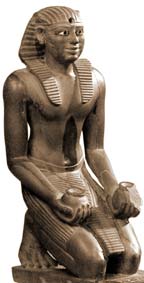 |
Queens and sons of Pepi I
Pepi
I married two non-royal sisters who were, confusingly, both called
Meryeankhnes. Both were to produce heirs to the throne - one
was the mother to Merenre (successor of Pepi I), while the second
was mother to Pepi II (as Pepi II was still a child when he ascended
the throne it is thought that Pepi I married this second sister
very late in his reign.
Pepi I's queens were
the daughters of Khui, he was a powerful Nomarch (or hereditary
governor) of the Thinite nome, the King's brother-in-law, Djau,
was to become Vizier. Instead of marrying one of his sisters
as was tradition in ancient Egypt, Pepi I was perhaps forced
to marry into a powerful nomarch family to gain their support.
During his reign the nobility of the country increased its power
and wealth - bigger and better tombs were built for them, those
who sought friendship with the king were given special privileges.
|
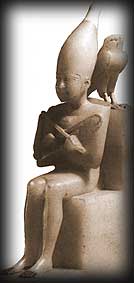 |
(Another of Pepi I's
queens - Weret-Imtes - was involved in a conspiracy against him,
but the plot was foiled and the queen punished).
The story
of Weni
A tomb
at Abydos holds the 'autobiography' of Weni - a man who came
from poor, humble beginnings to rise through the courts to become
a judge (he was to be the judge in the case of Pepi I's queen
Were-Imtes), to be placed at the head of an army of many tens
of thousands of men that would march against the Bedouin in northern
Sinai. - His account is one of the longest narrative inscriptions
dating to the Old Kingdom.
The
Pyramid of Pepi I
('Perfection
of Pepi is Established')
Original
Height - 52.5 m
Length
of Side - 78.75m
|
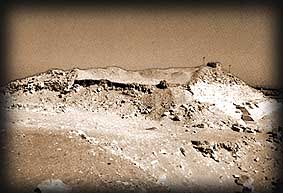 |
The pyramid of Pepi I
has not fared well - it is now not much more than a pile of rubble
12m high - in the centre is a crater dug by stone robbers. Fortunately
the inner chambers have survived - including the'Pyramid Texts'
which covered the walls (this is due to the conservation work
carried by the French Archaeological Saqqara Mission who pieced
the fragments of the walls back together - jigsaw puzzle from
hell!). - You can read some of the Pyramid Texts from Pepi I's burial chamber HERE
The original name of
the pyramid was 'Mennefer' - it was through the corruption of
this word that 'Memphis' came from.
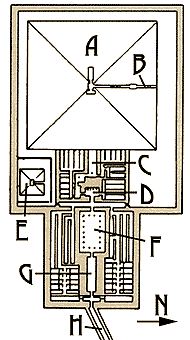 |
As is the standard pattern
for pyramids of this era -the pyramid is entered via a passage
on the north side - this passage then leads into the burial chamber.
| A
- Pyramid of Pepi I |
E
- Satellite pyramid |
| B - Passage
leading to burial chamber |
F
- Open Court |
| C
- Sanctuary |
G
- Entrance Hall |
| D
- niche with 5 statues |
|
|
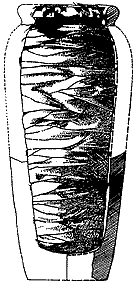 |
A unique
find was made in the burial chamber - not only was the sarcophagus
of Pepi I still there - but in a niche in the floor just to the
front of the sarcophagus was his pink granite canopic chest.
Close by a complete packet of viscera (most likely to be Pepi
I) was found.
Left
- the canopic jar and viscera found inside the pyramid
|
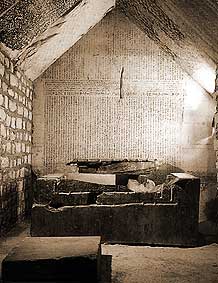 |
 A reconstruction
of how Pepi I's sarcophagus would have looked (note the line
of Pyramid Text).
A reconstruction
of how Pepi I's sarcophagus would have looked (note the line
of Pyramid Text).
Queen's
Pyramids
Five
pyramids have been recently (1988 or later) found to the south
of Pepi I's pyramids - the first three were originally were 20m
square, they had their own enclosure and offering temple. The
Pyramids were called 'Queen of the West'. 'Queen of the East'
and 'Queen of the Centre'. - The owner of the Eastern pyramid
has been identified as Nebwenet. The Western pyramid's owner
can only be idenitifed as 'eldest daughter of the King'. The
centre pyramid belongs to Inenek / Inti.
A fourth
pyramid has been identified as belonging to Merytytyes - a royal
wife and daughter.
A fifth
pyramid has just been discovered, but as yet the owner is unknown.
|









